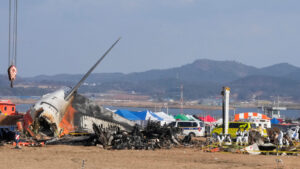Ukraine War Resolution: Possible Paths to Peace by 2025
The Ukraine war has stretched on, leaving behind a trail of destruction, economic challenges, and global geopolitical tensions. As the conflict enters another critical phase, analysts and policymakers are exploring potential resolutions and the possible scenarios for peace by 2025. In this article, we will examine the key pathways that could bring an end to the Ukraine war and the challenges that lie ahead in achieving sustainable peace.
1. A Negotiated Settlement
One of the most discussed outcomes for ending the war is a negotiated settlement between Ukraine and Russia. International mediators, including the United Nations and European Union, continue to push for dialogue. A ceasefire agreement paired with territorial compromises might form the basis of a fragile but necessary peace. However, trust between the warring sides remains a significant hurdle.
2. Military Stalemate Leading to Talks
Another plausible scenario is a military stalemate where neither side achieves decisive victory. Exhaustion of resources, mounting casualties, and domestic pressures could force both Ukraine and Russia to seek an off-ramp through diplomatic means. Historical precedents suggest prolonged wars often conclude in negotiated agreements after reaching a point of mutual fatigue.
3. Increased International Pressure
Global powers, including the United States, European Union, and China, play pivotal roles in influencing the trajectory of the war. Economic sanctions, diplomatic isolation, and conditional aid packages might force Russia or Ukraine to reconsider their strategies and prioritize diplomacy over continued combat.
4. Internal Political Shifts
Political changes within either Ukraine or Russia could also influence the war’s outcome. Leadership transitions, public protests, or internal dissent might reshape national priorities and open doors for renewed peace initiatives.
5. Frozen Conflict Scenario
In some cases, wars do not formally end but transition into “frozen conflicts.” This scenario would mean intermittent skirmishes, heavily militarized zones, and prolonged tensions without a formal peace agreement. While not ideal, it has been a recurring outcome in similar geopolitical conflicts.
6. The Role of International Institutions
Organizations like NATO, the UN, and OSCE remain central to any sustainable resolution. Their roles in overseeing ceasefires, humanitarian aid, and post-war reconstruction will be critical in stabilizing the region and preventing a resurgence of violence.
More Stories
What Could Happen to Sean ‘Diddy’ Combs’ Wealth? Legal Experts Explain
Jury Begins Deliberation in High-Stakes Trial of Sean Combs Wealth The jury in Sean "Diddy" Combs’ federal trial has started...
Kim Kardashian Tears Up at Bezos-Sánchez Wedding in Venice
Kim Kardashian Tears Up at Magical Venetian Ceremony Kim Kardashian Tears Up at Jeff Bezos and Lauren Sánchez tied the...
CARV Unveils AI Beings Roadmap, Ushering In a New Era of Autonomous Web3 Agents
CARV AI Beings: From Tools to Autonomous Actors CARV AI Beings has officially launched a new roadmap that redefines the...
Iran Gelar Pemakaman Kenegaraan Usai Konflik Berdarah dengan Israel
Iran Gelar Pemakaman Negara, Ratusan Warga Hadiri Iran Gelar Pemakaman Negara besar-besaran untuk sekitar 60 korban tewas dalam konflik bersenjata...
Trump Celebrates ‘Tremendous’ Wins from Iran Strike to Supreme Court Ruling
Trump Touts Iran Strike and Ceasefire Boost Trump’s Image President Donald Trump Touts Iran Strike. From a bold strike in...
David Corenswet Opens Up About His Superman Body Transformation and Loneliness
David Corenswet Pushing Limits for Superman Physique David Corenswet knew that embodying Superman wasn’t just about nailing Clark Kent’s personality—it...

